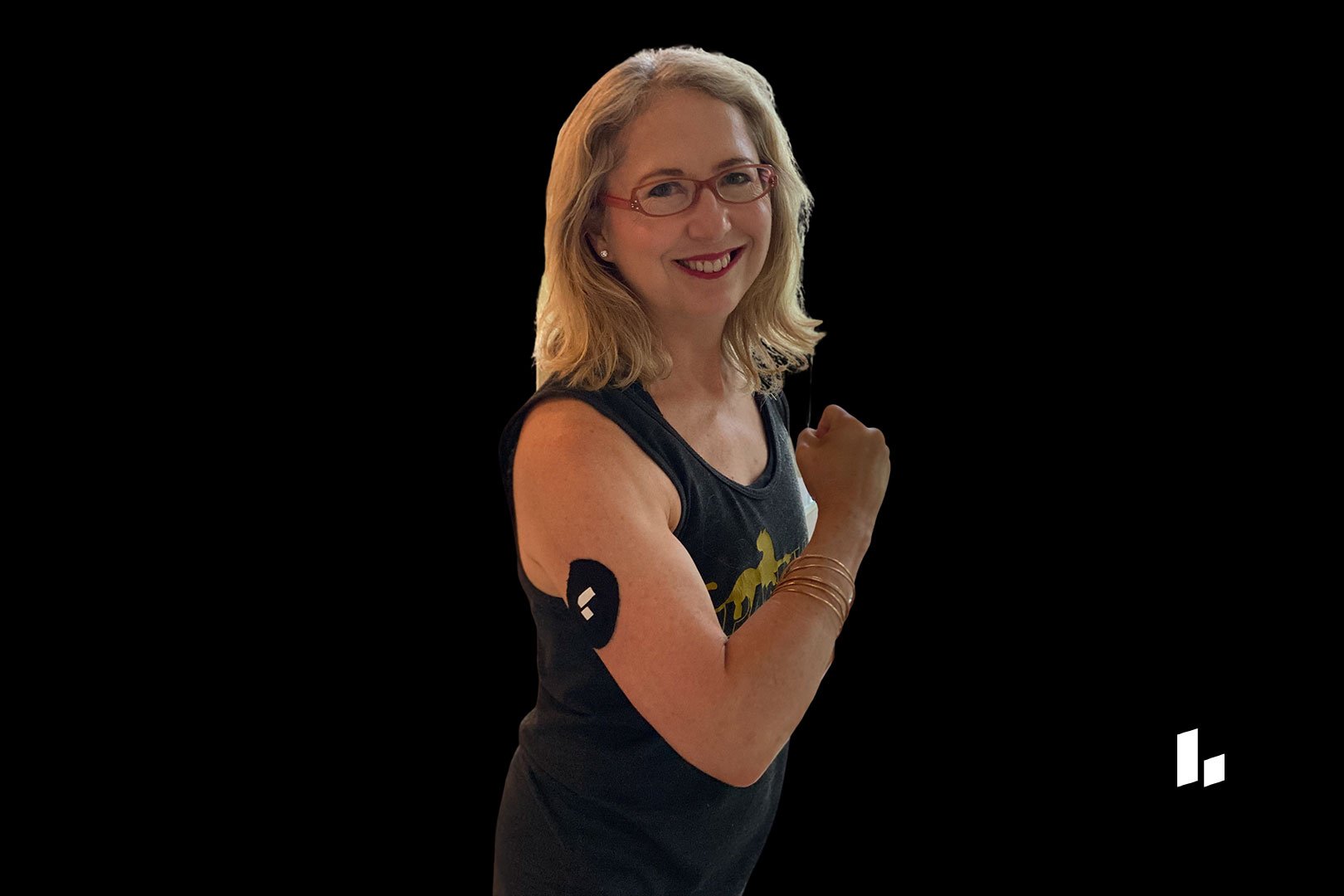Member Profile:
Who: Mo Jeans, 53
Where: Portland, OR
Time with Levels: Two years, intermittently
Most Useful Takeaway: There’s a reason to try different workouts—Jeans just started doing CrossFit, and it’s been a positive for her glucose response.
1. What was your health like before using Levels?
I was struggling with my blood sugar. My A1c was never in the prediabetes range, but I was on the upper edge of normal. I have a family history of diabetes, and as a primary care provider, I’m well aware of the long-term sequelae (consequences) if you have the disease: neuropathy, amputation, heart disease, stroke, cancer. In addition, over the last few years, I entered menopause. Menopause also increases the risk of developing diabetes, hypertension, heart attack, heart disease, and stroke.
2. What made you want to put a CGM on your arm?
I’m a physician assistant in a functional medicine practice. Because of my personal risks and concern about prediabetes and diabetes, I’ve been trying to figure out how to affect my blood sugar. Ultimately, my goal is to extend my “health life,” or the number of years I’m healthy before I die, versus the number of years I live. People sometimes say they want to live as long as possible, but I don’t want to be dysfunctional in my later years. I felt that wearing a CGM could be one tool to help me identify the habits I needed to change to make that happen.
Learn more:
3. What did you learn about the impact of your eating habits on your blood sugar?
Although my A1c was in the normal range, I discovered that any kind of sugar hugely impacted my glucose response. I’d eat five cherries—I’d see a spike.
I read a lot on the Levels blog about personal experimentation. So, I tried eating these foods before or after a fatty or high-fiber meal, but those changes did not affect my spikes. I might spike slightly less if I ate those cherries after a fatty meal or salad, but I still spiked. Another fascinating discovery was that cheese elevates my blood sugar for 24 hours. I experimented with cheese several times—the correlation is real. I wouldn’t dip below 100 mg/dL for 24 hours. It has been suitable for identifying the foods that will send my blood sugar up when I eat out (lots of hidden sugars), so I know what to avoid or eat in the future if I go out with friends/family.
4. How do non-food factors affect your blood sugar?
Aerobic exercise will spike it. I just started functional bodybuilding (it’s CrossFit-like) with my husband a couple of weeks ago and found that that type of exercise had an almost immediate stabilizing effect on my blood sugar. Currently, I do a little bit of weights daily (versus longer bouts two or three times a week), which seems to work well for me. I notice the days I do legs lead to better blood sugar control than days I do shoulders or back.
Temperature also affects my blood sugar. Sitting in a sauna causes a spike, the same as if it’s really hot outside. But there is only so much time in the day, and I have to select what factors to focus on, and the heat’s impact is not one of those.
I notice that when my blood sugar is elevated, my sleep gets wonky—something that’s supported by data from the Oura ring that I also wear. When I eat cheese, I just don’t sleep well.
5. You wear the CGM intermittently. Why do you keep putting one on?
Well, it’s cost-prohibitive to use one every week. But what keeps me continuing with the CGM is that it is a great accountability partner that helps me make smart decisions.
I know that your blood sugar does need to fluctuate after eating foods. A perpetually flat line isn’t the goal. But what is reassuring is that my blood sugar response is different this year than last year. When I used Levels last summer, I looked at what I could do to prevent spikes. That limited my food choices so much that I didn’t enjoy any fruit in fear of a glucose response. This year, I have a different approach.
I don’t choose to go out and binge on pizza, but I still take mental notes on things and adjust my habits accordingly. If 10 cherries blows my blood sugar up to 160 mg/dL, which I’ve seen it do, I remind myself that it’s not a good idea to eat like that again. Maybe next time, I’ll do three cherries, not 10.
Fruit may increase my blood sugar, but it also supplies some great phytonutrients, and this is the season to eat them. What I’ve tried to do is, rather than eating blueberries throughout the year, I focus on eating seasonal fruits, reaping their health benefits, and even appreciating the blood sugar spikes now, though trying to limit them. My new approach is working with nature, and it’s going really well for me.










